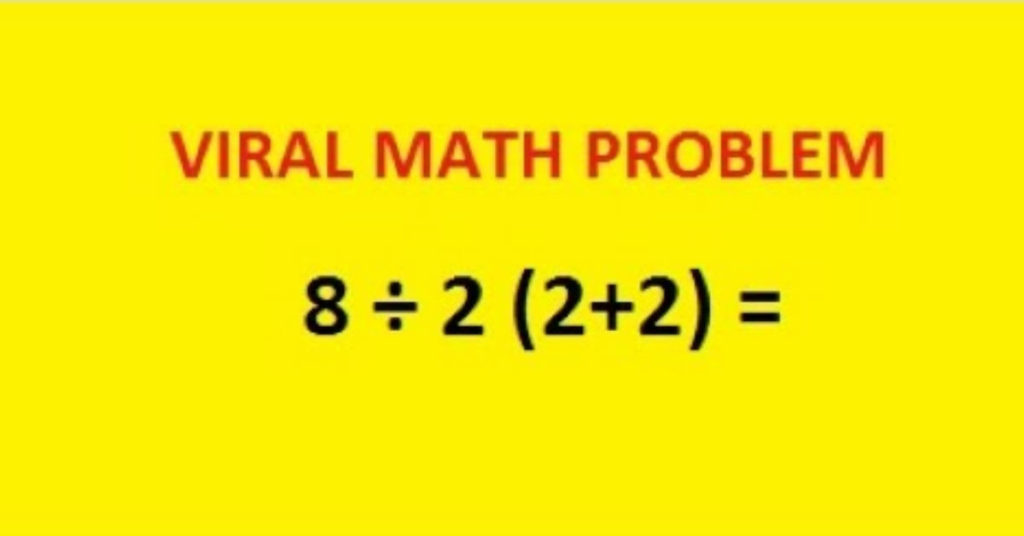When you were in grade school, were you any good at math? I know I certainly wasn’t. That being said, I am pretty confident I can now solve a kids math problem as an adult.
This problem, however, is driving the internet mad. There are debates in offices and across dinner tables worldwide over the correct answer to this kids math problem.
Can You Solve The Kids Math Problem That’s Driving The Internet Crazy?
Apparently, the discussions about the right answer to this kids math problem have gotten so heated in some offices that staff has reached out to mathematicians to finally find the truth.
The problem in question is as follows:

Can you get right answer?
A Kids Math Problem and a Hotly Debated Answer
Some people claim the answer is 16. Others say that it is 1.
But how could a math problem have two correct answers? Is math not supposed to be the one thing that is right and wrong, plain and simple, with no gray areas?
The answer is yes – this one is just a little bit trickier depending on whether or not you remember your grade school math.
Why People Are Getting Two Different Answers For This Kids’ Math Problem
The answer to this problem is achieved through something called the order of operations. Remember this? It’s the order in which an equation has to be solved.
In some areas of the world, children are taught the acronym BEDMAS or PEMDAS to remember how this works. They stand for:
- B – brackets/parenthesis
- E – exponents
- D – division
- M – multiplication
- A – addition
- S – subtraction
- P – brackets/parenthesis
- E – exponents
- M – multiplication
- D – division
- A – addition
- S – subtraction
Whether you use PEMDAS or BEDMAS, the correct answer is and always will be 16.
Here’s Why
The critical part is that the D and M in the acronym stand for division OR multiplication (or multiplication OR division), you are supposed to do whichever comes first in a given equation. The order that they appear in each acronym is not what dictates their use.
In the case of this question, the first step is to do what’s inside the brackets: (2+2)= 4.
Now the equation looks like this: 8 ÷ 2 (4). Remember that a number beside a bracketed number actually means multiplication. So now, the equation is 8 ÷ 2 x 4.
Now that all that’s left to do is division and multiplication, you simply solve the equation from left to right, starting with the division:
8 ÷ 2 x 4 = 4 x 4 = 16
Editors Note: If you are punching this equation into a scientific calculator to double-check your work, make sure it looks like this: 8 ÷ 2 x (2+2).
Punching it in like this: 8 ÷ 2 (2+2) may cause it to incorrectly get an answer of 1. Based on order to operation rules, this would be incorrect.
If you’re still confused about the order of operations, check out the video below.
Other Math Quizzes
Now that you’ve refreshed you math problem skills, try these ones out, too:
- Test your math skills with this tricky problem
- Only out-of-the-box thinkers can solve this math problem
- Can you solve this math problem that went viral in Japan?
- Few can solve this math problem without a calculator
Have fun, and don’t forget to share this with your friends and family!
Correction Notice (03/15/2021): A previous version of this article indicated that there could be two answers. This was based on the assumption that PEMDAS and BEDMAS could lead to different answers, which was incorrect. The article has been edited to reflect the correct answer and methodology.

